Abstract
OBJECTIVES. Since 1981, per capita consumption of alcohol (based on sales figures) has decreased in the United States. This study describes drinking patterns in the 1990 national alcohol survey by demographic correlates and assesses changes in drinking patterns from the 1984 survey. METHODS. Data were obtained from a national household probability sample within the 48 contiguous states; face-to-face interviews were conducted with 2058 adults. The instrument contained questions pertaining to the respondent's background, attitudes toward alcohol, and use of alcohol. RESULTS. The proportions of current drinkers; current drinkers of wine, beer, and liquor; weekly drinkers; and drinkers who reported having five or more drinks per occasion at least once a week were significantly lower in 1990 than in 1984. These changes remained significant when demographic characteristics were controlled by logistic regression. The findings held for Whites only; there were no significant trends for Blacks or Hispanics. CONCLUSIONS. While there has been a downward turn in alcohol use in the United States, the correlates of alcohol use have not changed. How these shifts affect alcohol-related problems is an important area for future research.
Full text
PDF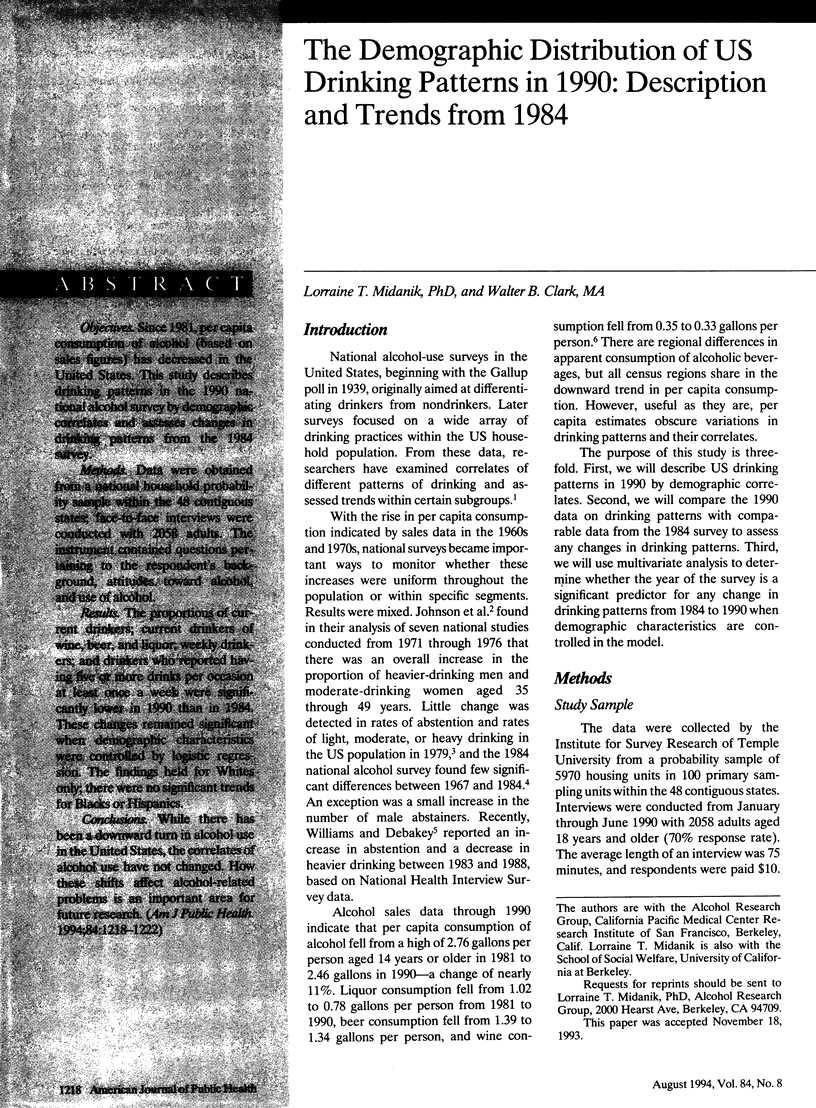
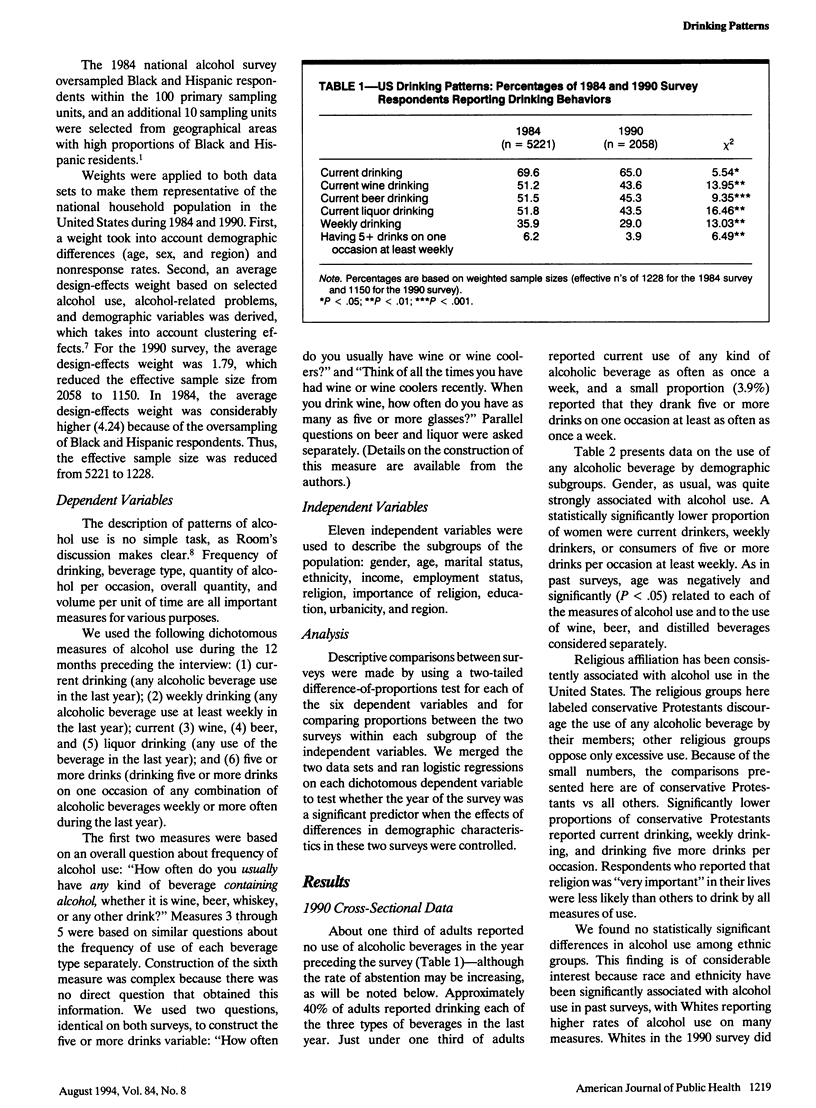
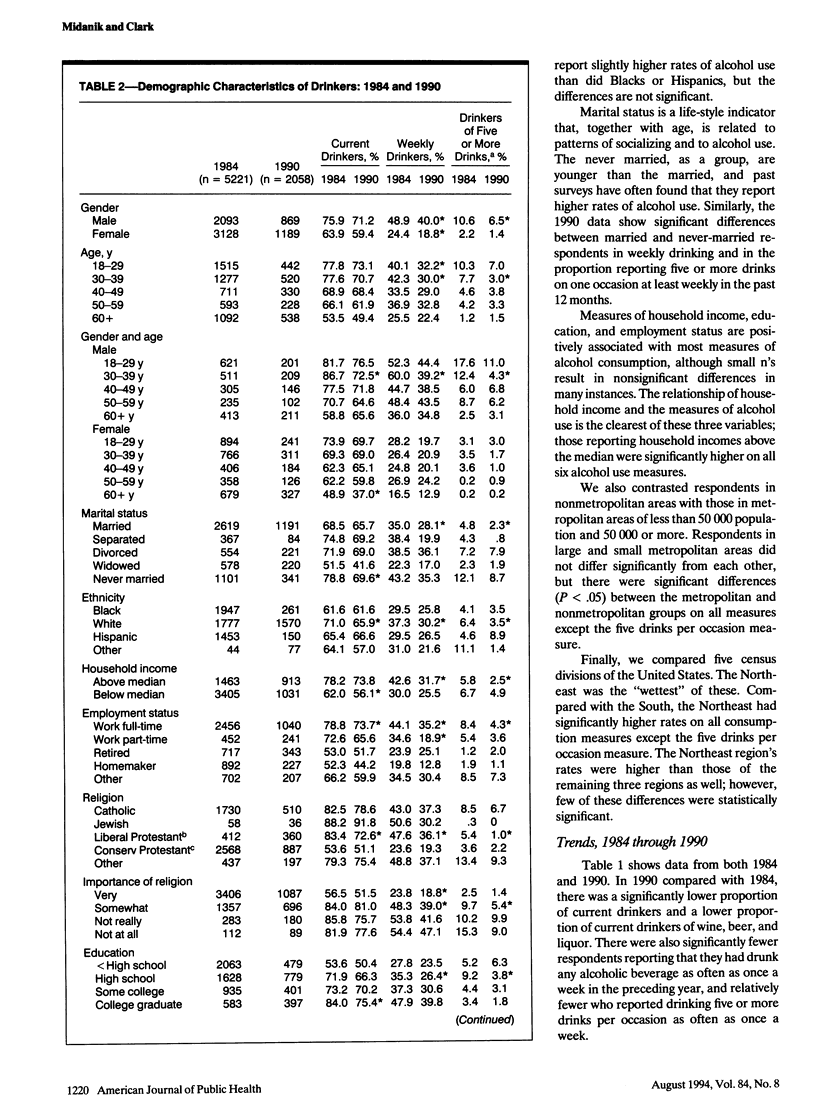
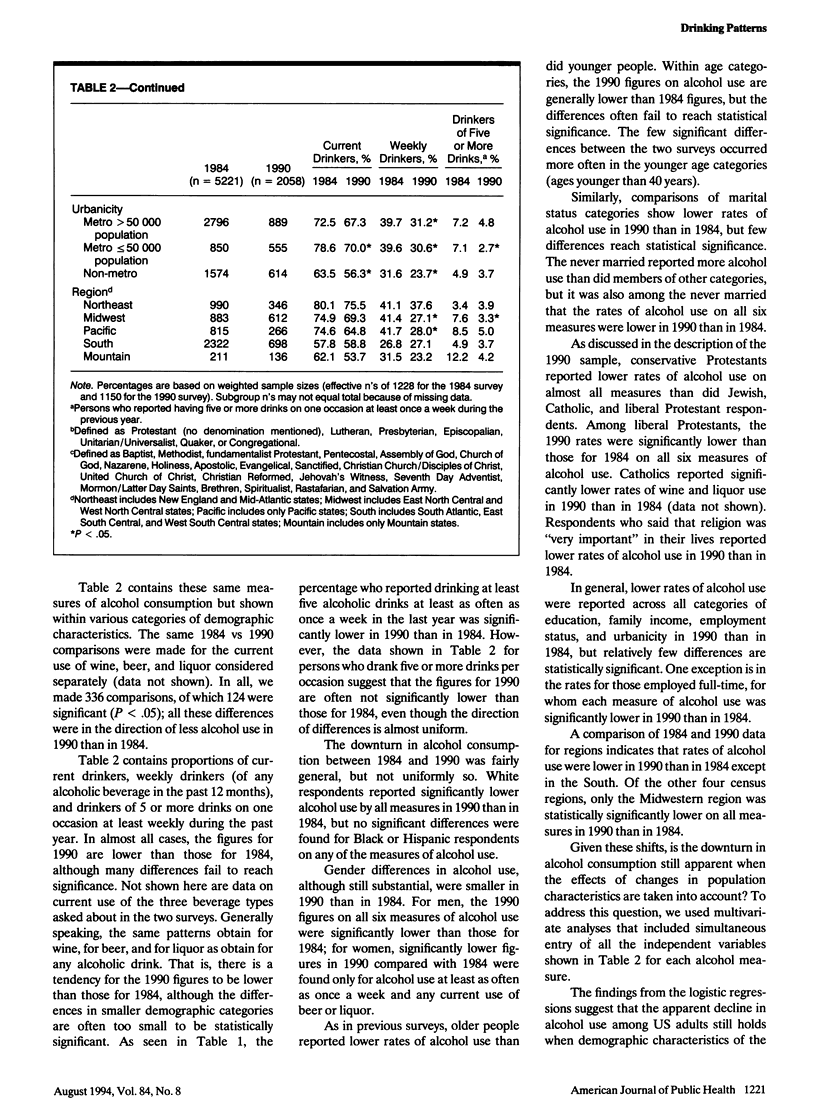
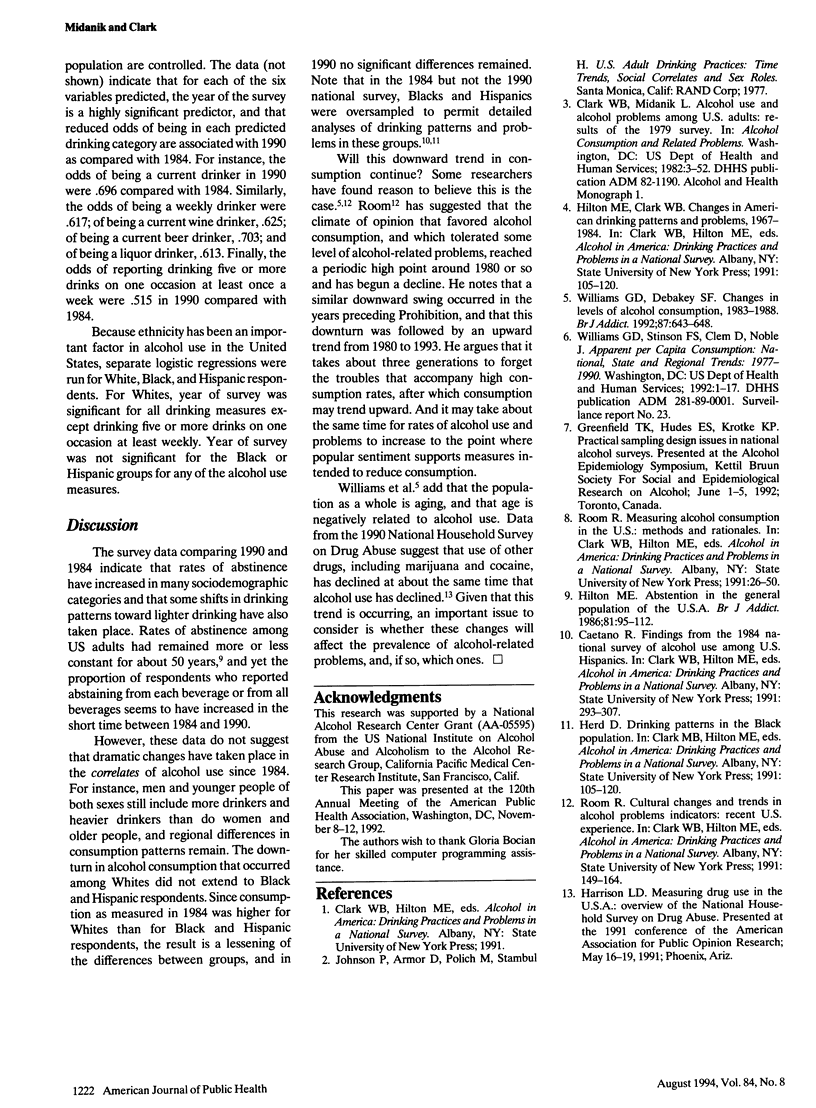
Selected References
These references are in PubMed. This may not be the complete list of references from this article.
- Hilton M. E. Abstention in the general population of the U.S.A. Br J Addict. 1986 Feb;81(1):95–112. doi: 10.1111/j.1360-0443.1986.tb00300.x. [DOI] [PubMed] [Google Scholar]
- Williams G. D., Debakey S. F. Changes in levels of alcohol consumption: United States, 1983-1988. Br J Addict. 1992 Apr;87(4):643–648. doi: 10.1111/j.1360-0443.1992.tb01966.x. [DOI] [PubMed] [Google Scholar]


